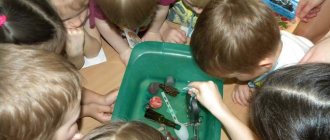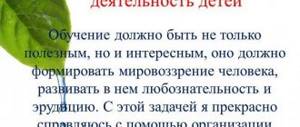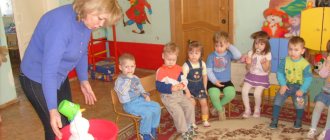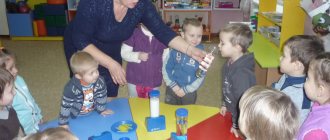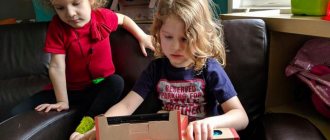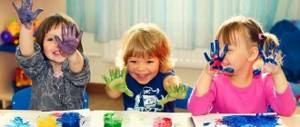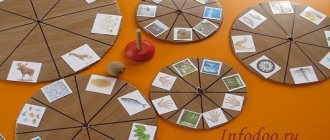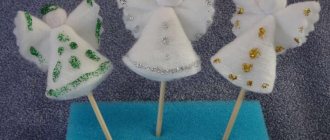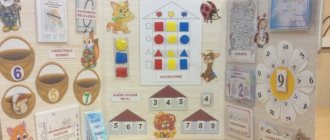Master class for teachers on experimentation “Experiments with children”
Elena Davidenko
Master class for teachers on experimentation “Experiments with children”
Master class with teachers on experimentation
«Experiments with children»
The purpose of the master class : to improve the professional skills of teachers participating in the master class in the process of active pedagogical communication on the problem of children's experimentation .
Tasks:
• show how experiments can be used in children's experimental activities .
• involve
teachers to jointly conduct experiments introducing preschoolers to different properties of objects;
• develop teachers’ ability to see a problem , solve it and draw conclusions;
• cultivate teachers’ interest in experimental research activities .
• develop cognitive interest in the world around us, the ability to share acquired experience with other people .
Handout:
• matches, pipettes, water, napkins
• plastic bag, water, wooden skewers, basin, napkins
• balloons, orange, napkins
• balloons, knitting needles or wooden skewers, napkins
Progress:
Today I propose to talk about the miracles that surround us in everyday life. Tell me, who among us does not expect miracles and magic? Of course, everyone is waiting, both adults and children. Only children look forward to it with special impatience, because they look at the world completely differently than we adults do. Why? Yes, because children are born researchers, and confirmation of this is their curiosity, constant desire to experiment , and the desire to independently find a solution to a problem situation. And at a certain moment, the child’s favorite word becomes the word “why?”
.
Guys, now we will go to the laboratory to conduct experiments .
Who can tell me what a laboratory is? (A laboratory is a room where various experiments , scientific and technical experiments , and various objects are examined.)
Who works in the laboratory? (Laboratory assistants.)
The laboratory is always quiet and clean.
Laboratory assistants work in white coats and special clothing. Therefore, we also need to put on a robe .
I will be the head of the laboratory.
Dear laboratory assistants! Listen to how you should behave in the laboratory: don’t make noise, listen carefully, answer questions, don’t touch anything without permission.
Experience 1.
If you break five matches in the middle and place them as shown in the figure, then drop a few drops of water onto the folds of the matches in the center between them. Gradually the matches will begin to straighten out and form a star. What is the reason?
Conclusion: Matches absorb water and swell.
Experience 2.
I wonder what will happen if you sprinkle orange zest juice on an inflated balloon? Incredibly, it will simply burst! Now we will try to burst a balloon using an orange, and at the end I will explain why this happens. This is not only an educational, but also a very tasty experience , because the orange will not be harmed during the experiment and can be eaten.
We inflate the required number of balloons, which will be irretrievably damaged during the experiment , and squeeze the orange zest over the balloon... The balloons burst as soon as the juice from the zest gets on them!
Conclusion: The juice that we squeeze from the skin of an orange contains a special substance - limonene. Limonene is found in many citrus essential oils, not just oranges. So, limonene has an amazing ability to dissolve rubber, and, as you know, our poor balls are made of rubber. That's how simple it is in entertaining chemistry. A little knowledge and we have just carried out a chemical reaction to dissolve rubber using a substance - limonene!
We spend a physical minute “Weirdos - Airplane”
Experience 3.
We all know from childhood that balloons are “afraid”
sharp objects. The presented video describes a method for piercing a ball so that it does not burst.
All you need for the experiment is a balloon, a wooden skewer or knitting needle (and some dishwashing liquid)
. The secret is simple. In order to preserve the ball, you need to pierce it at the points of least tension, located at the bottom and at the top of the ball.
Conclusion: The whole point, of course, is the elasticity of the material from which the ball is made. It grips the needle so well that it prevents the balloon from bursting
Experience 4.
1. Pour water into a plastic bag halfway.
2. Use a pencil to pierce the bag through the place where it is filled with water (preferably quickly)
.
Conclusion: if you pierce a plastic bag and then pour water into it, it will pour out through the holes. But if you first fill the bag halfway with water and then pierce it with a sharp object so that the object remains stuck into the bag, then almost no water will flow out through these holes. This is due to the fact that when polyethylene breaks, its molecules are attracted closer to each other. In our case, the polyethylene is tightened around the pencils.
Our work is finished for today. We managed to find answers to only a few questions, but the world around us is full of wonders and magic. Now choose an emoticon, what mood do you feel after visiting n
our laboratory.
Experiment , don’t lose your curiosity, and then the world will reveal its secrets to you.
Thank you for your attention. I wish you creative success.
